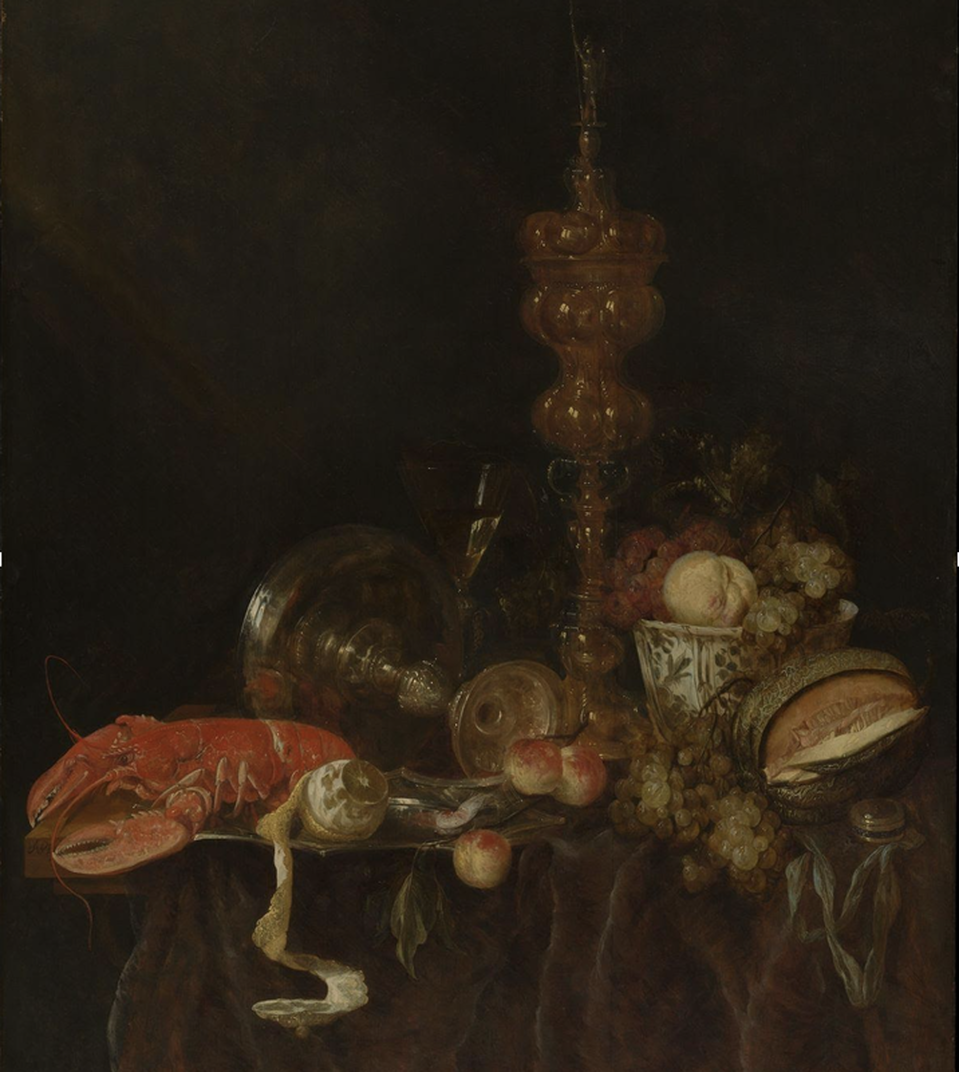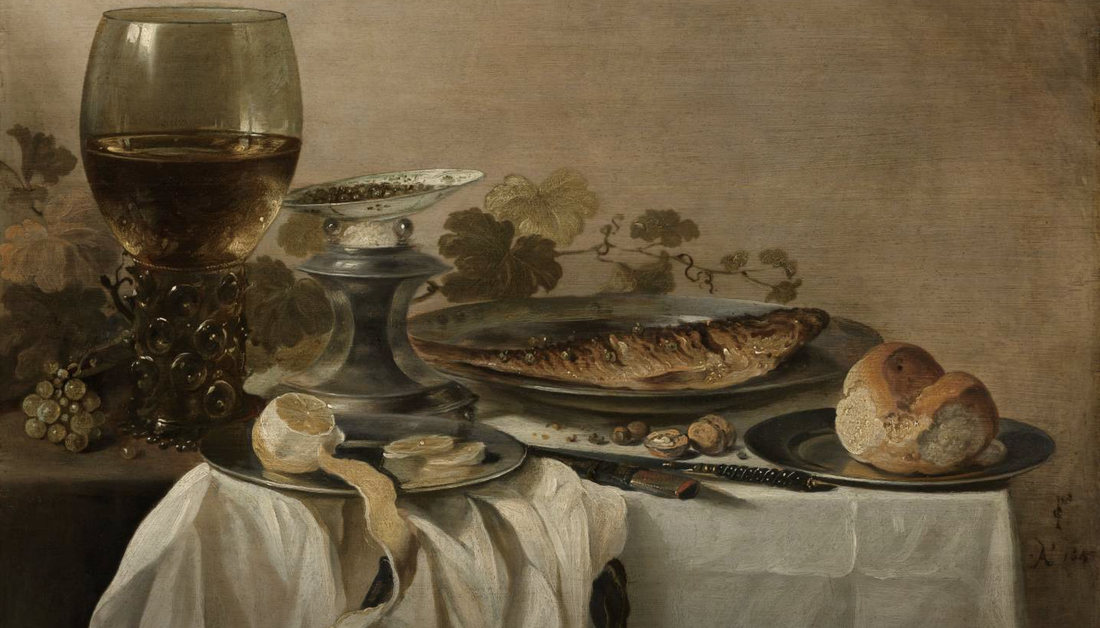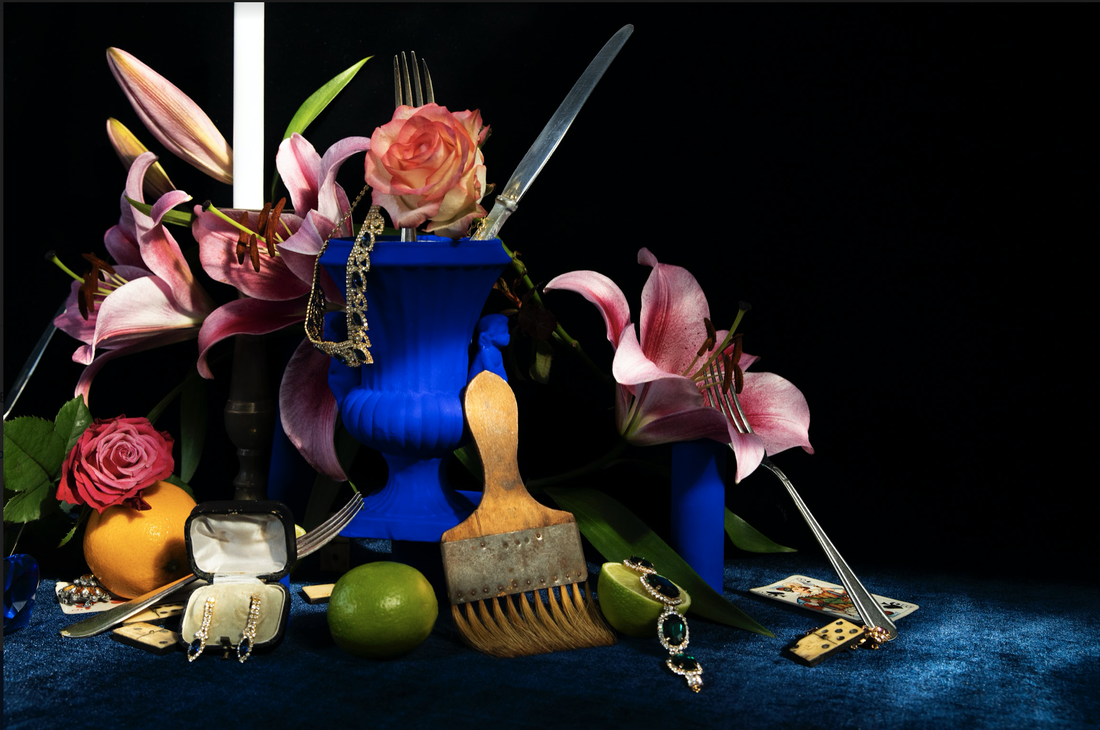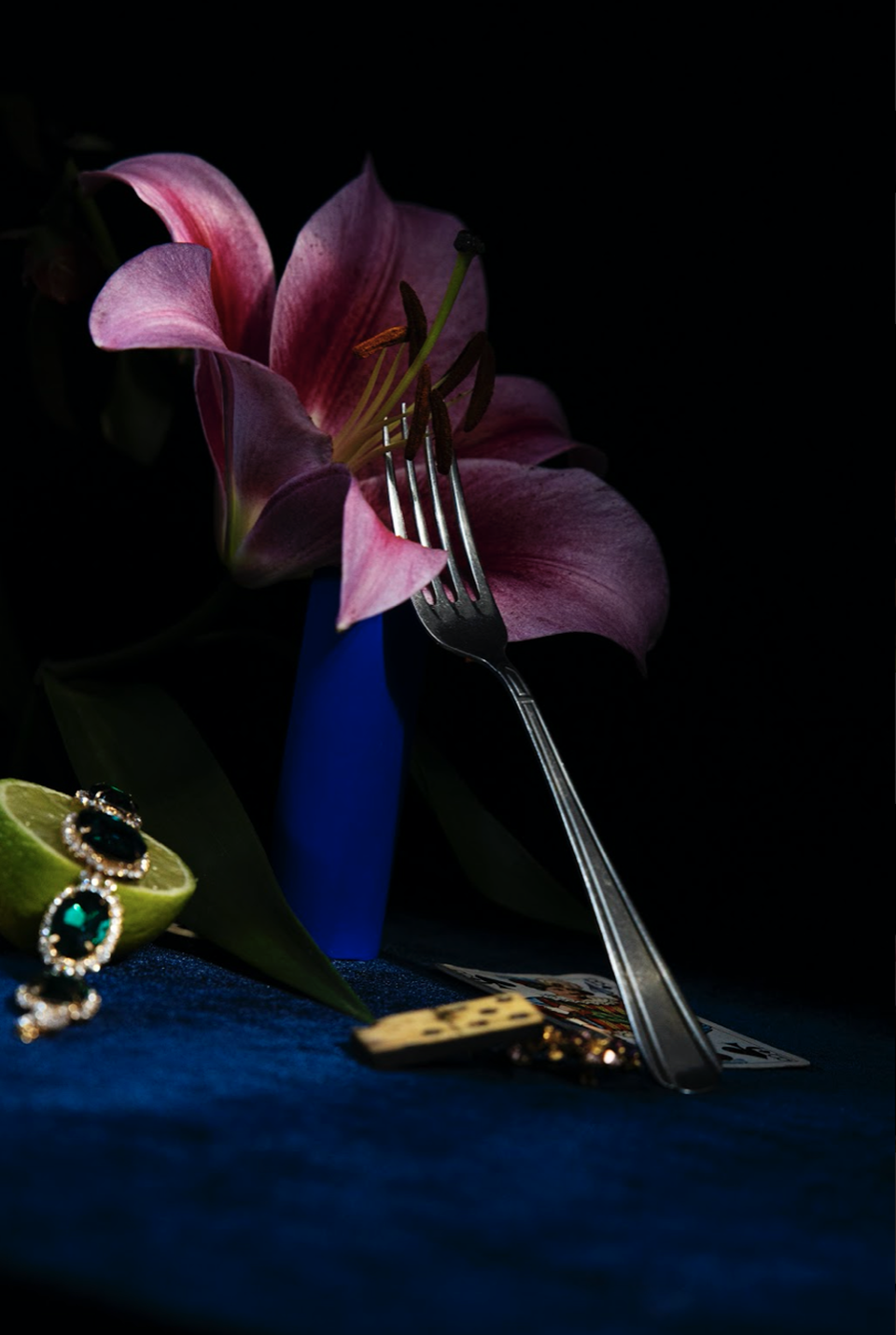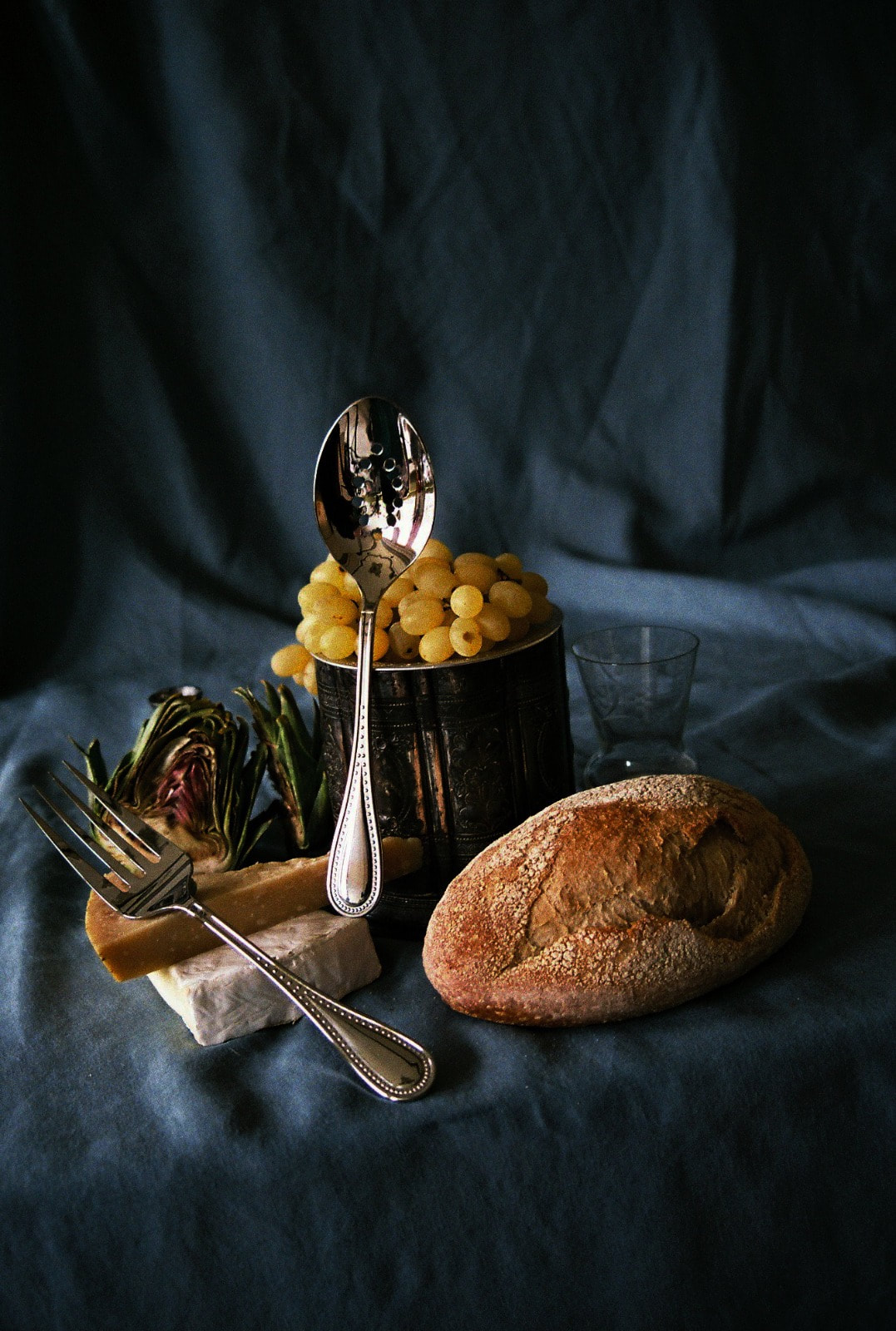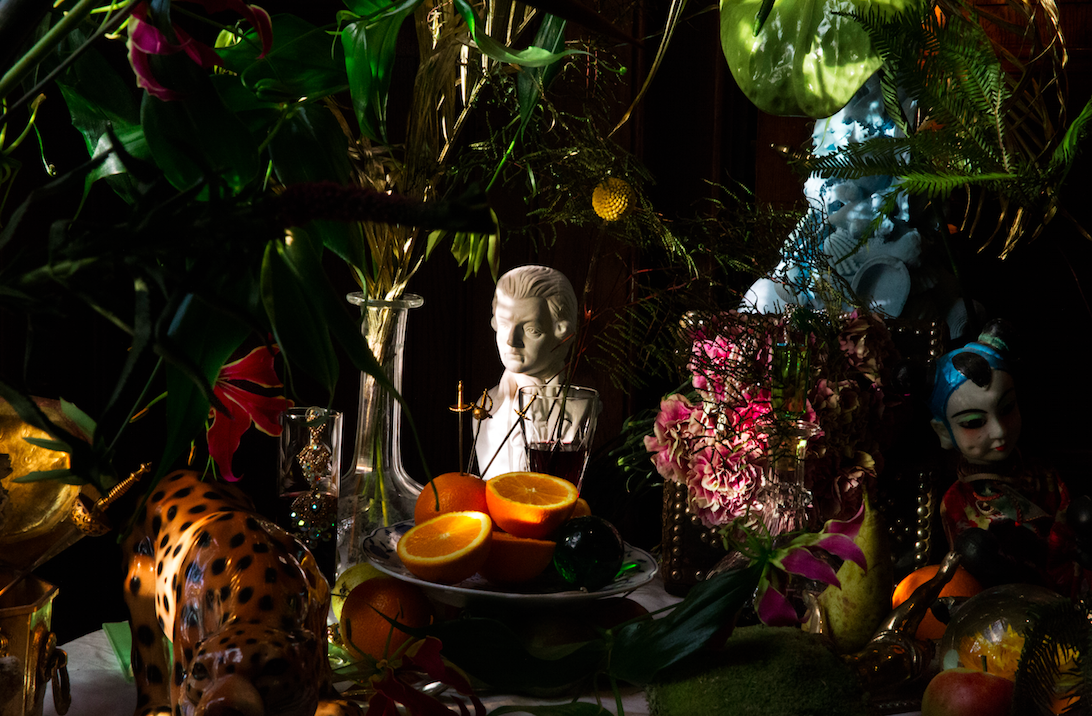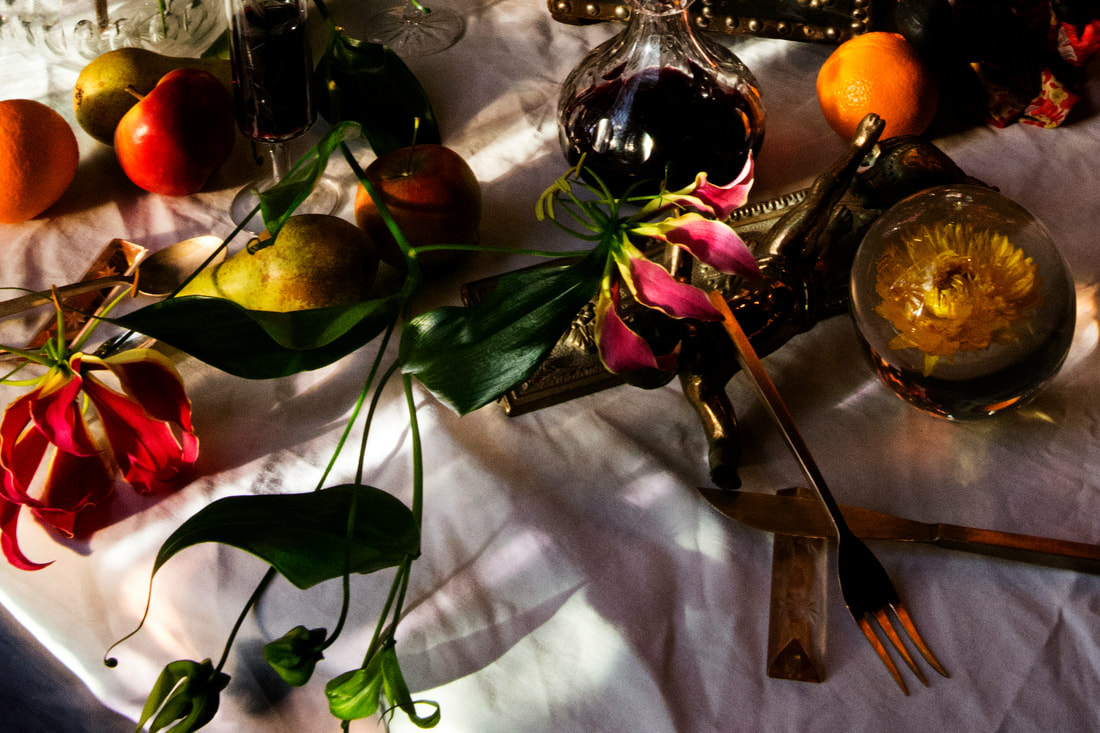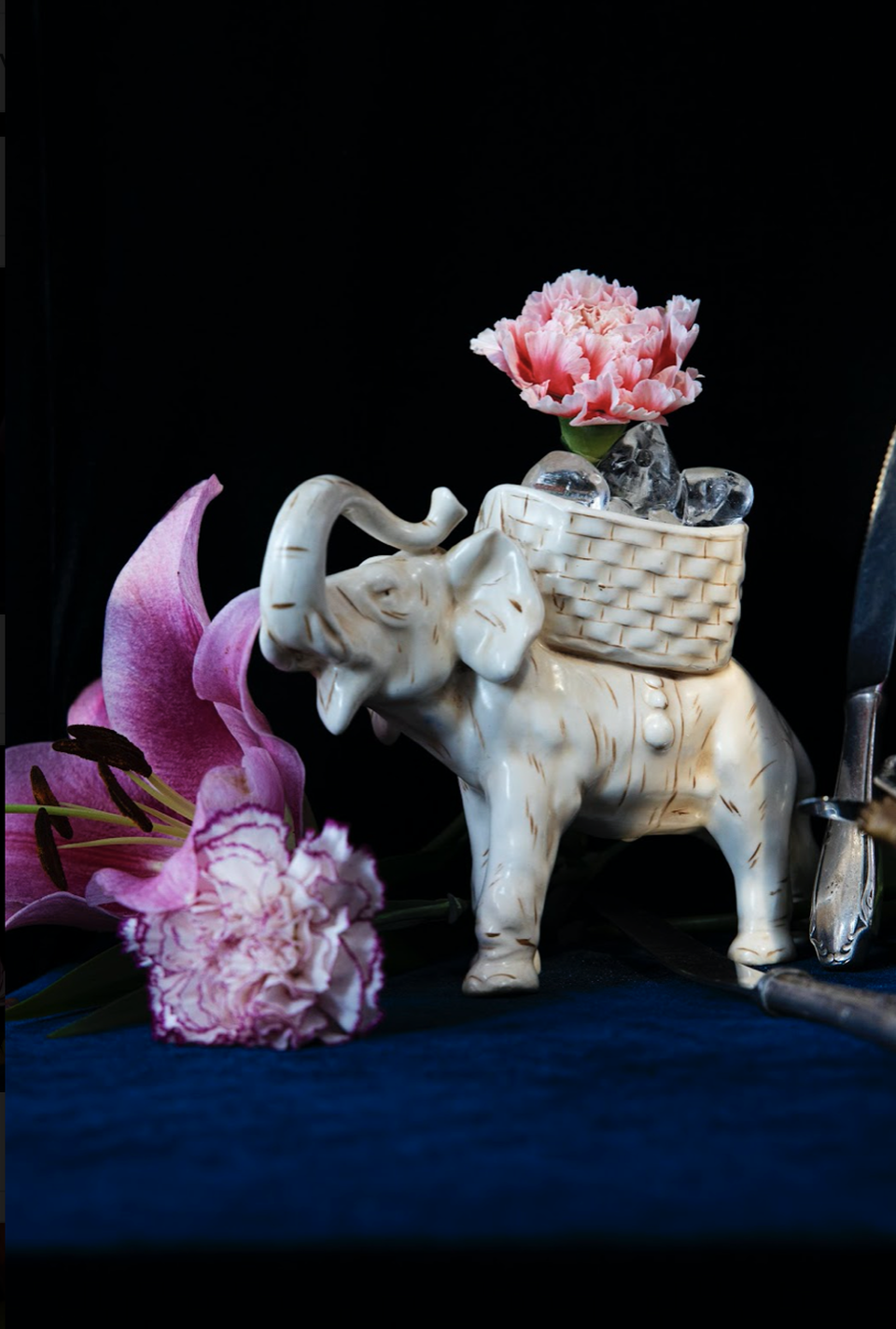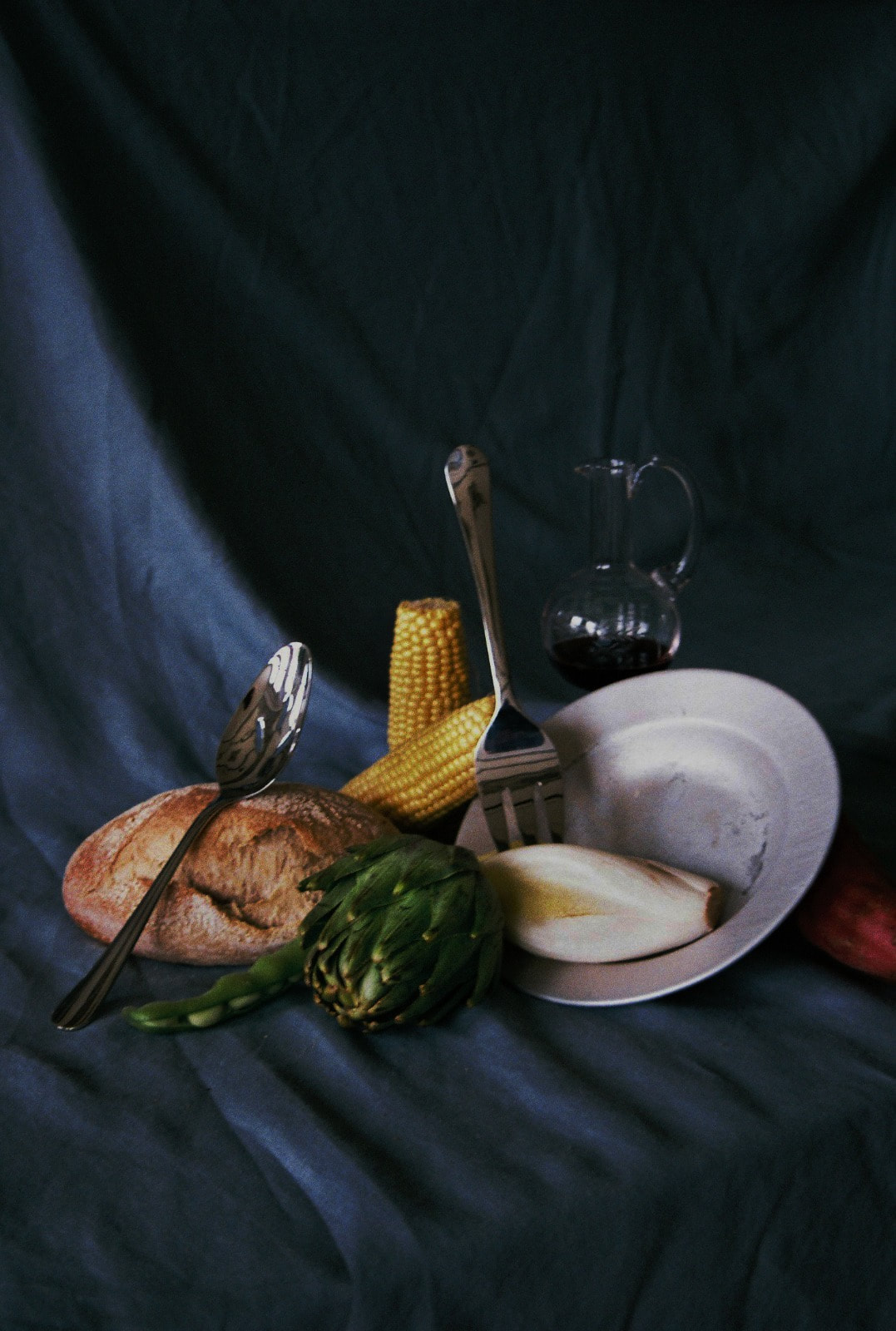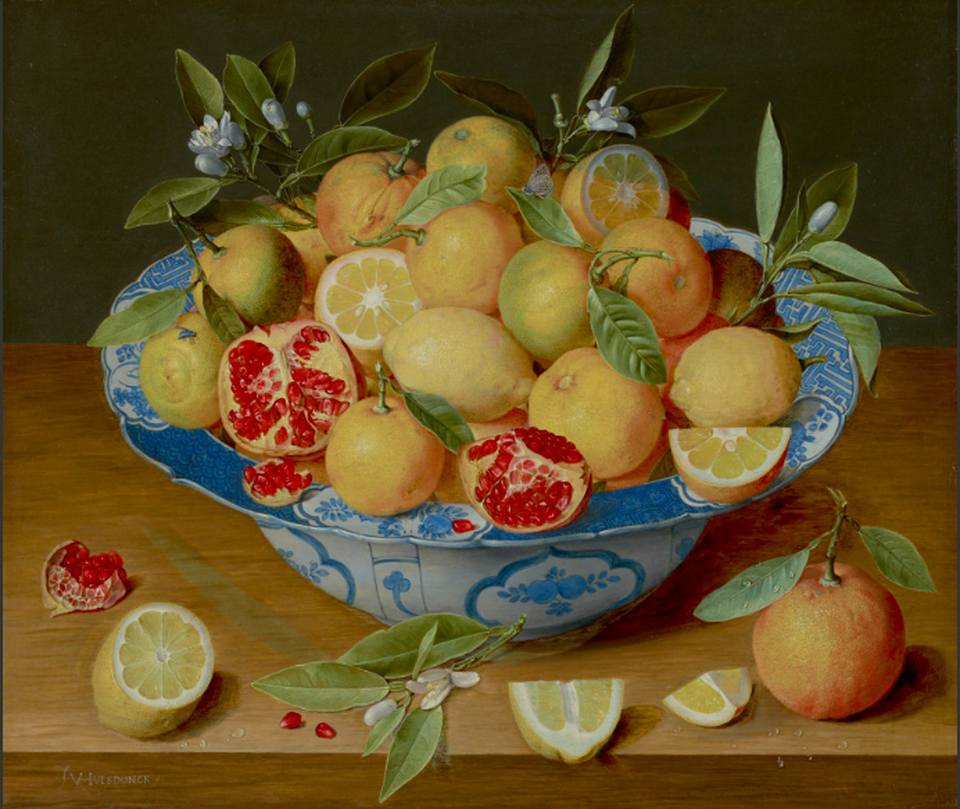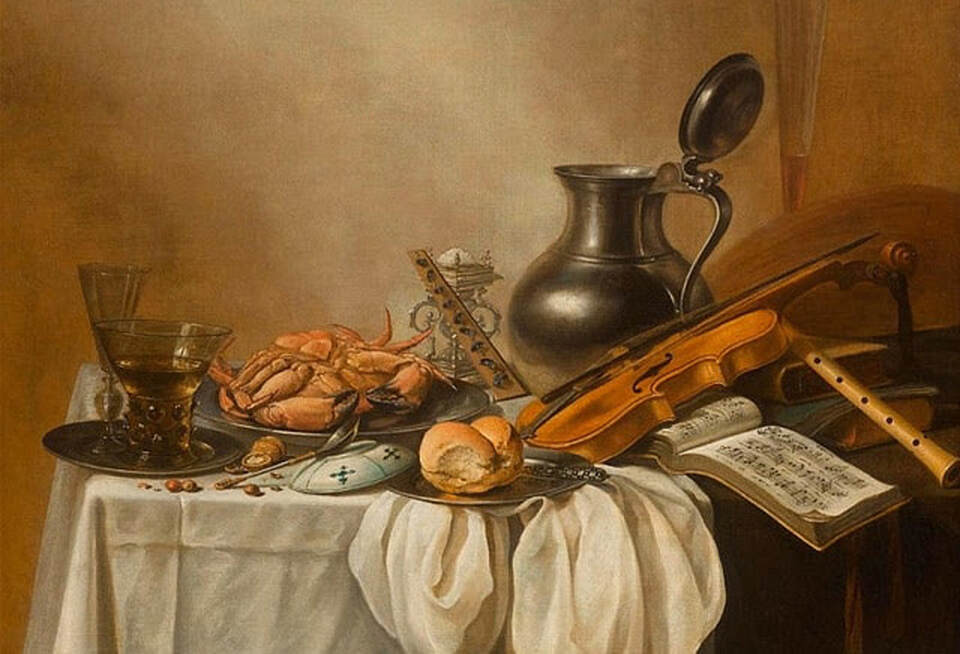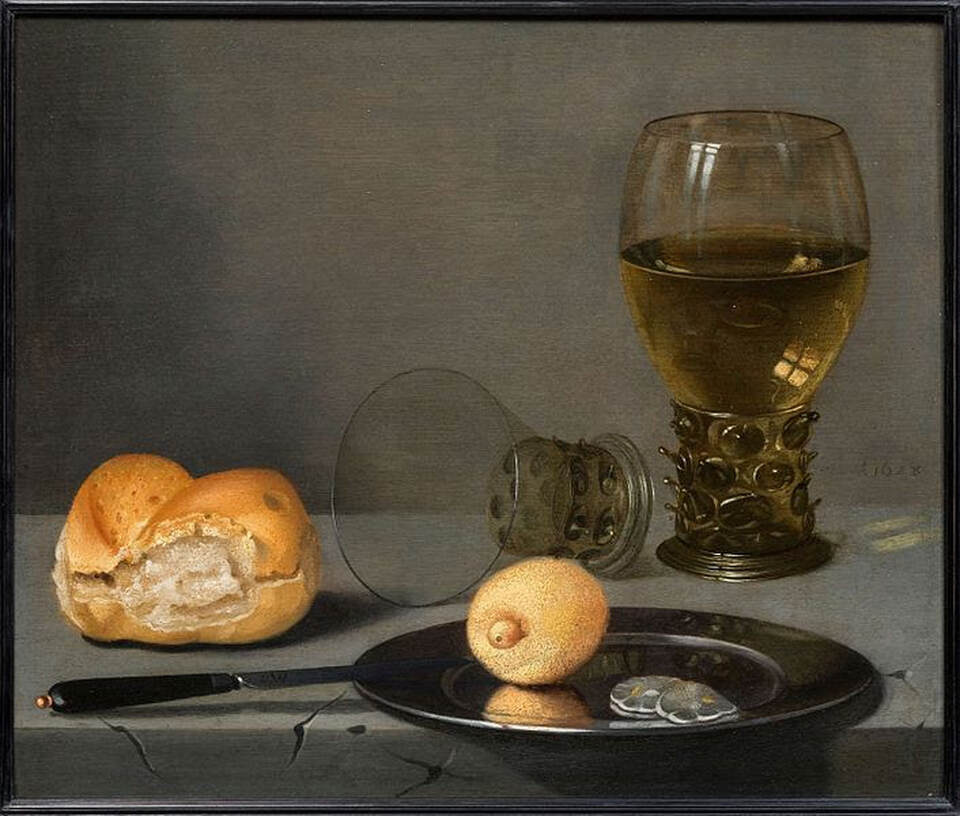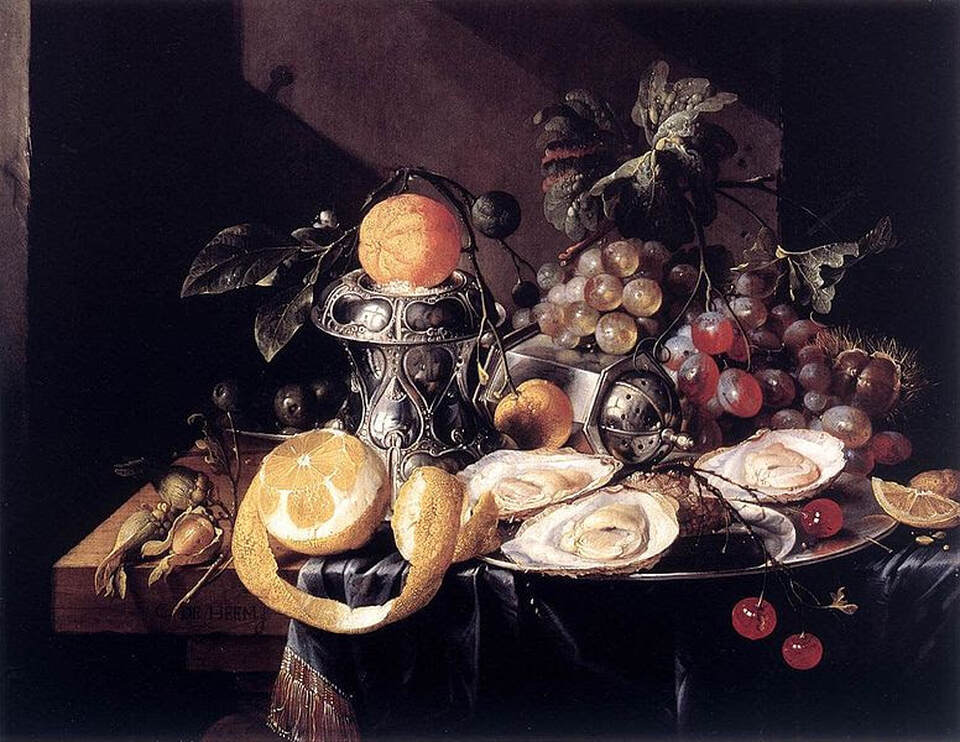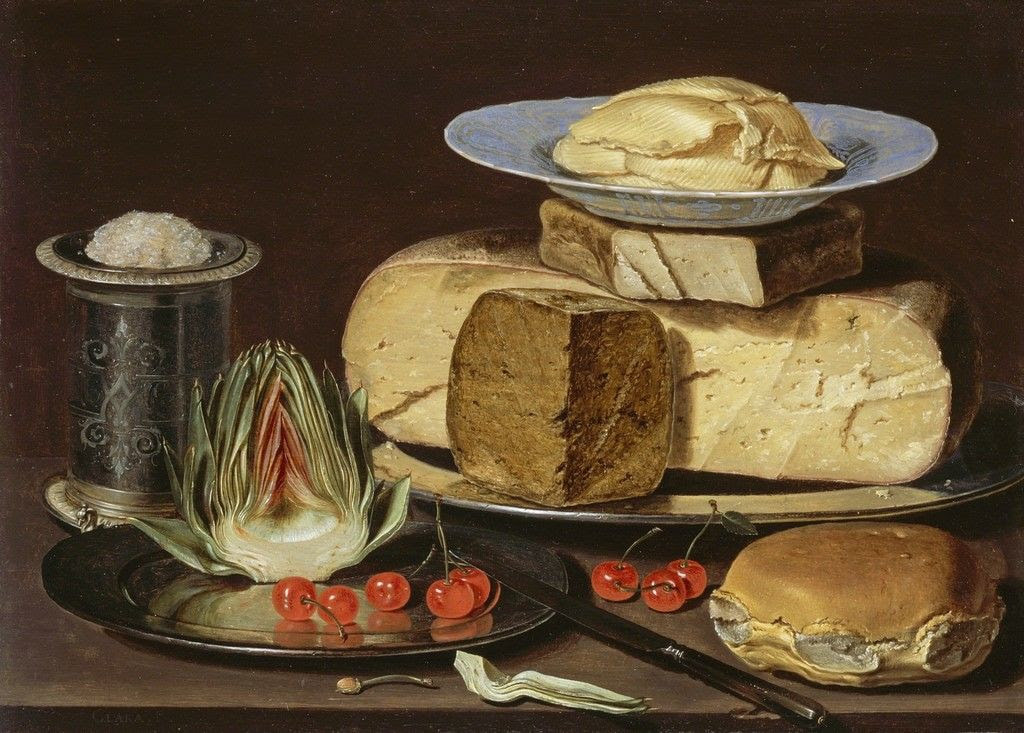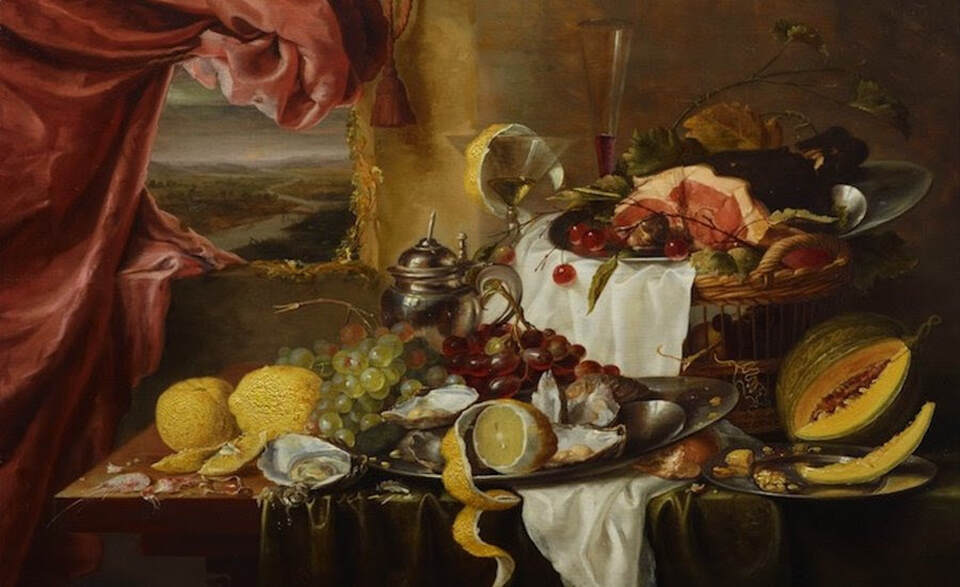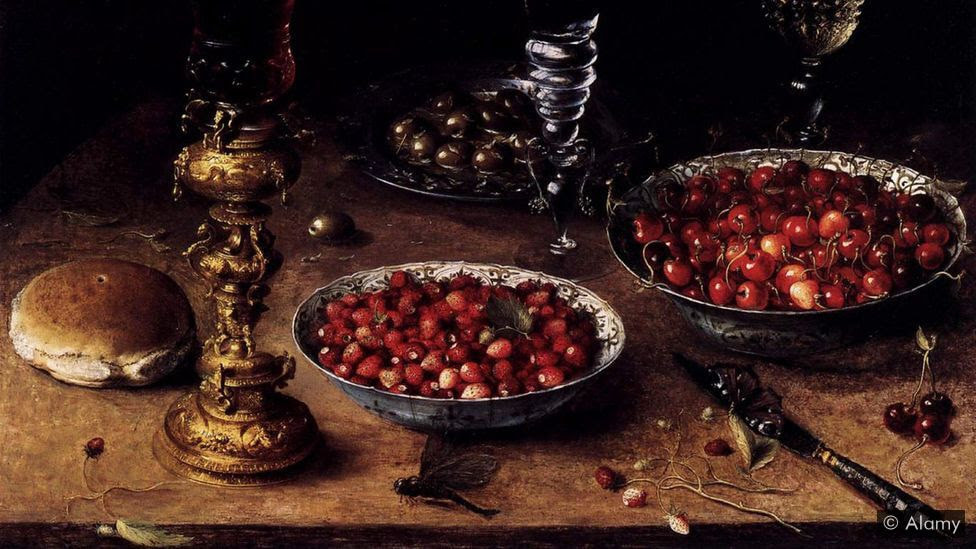Still life
Have you ever been looking at a Dutch still life and thought to yourself, “this seems like a wildly inefficient way to make a sandwich”? Turns out, there’s more to the Nature Morte than sumptuous midnight snack components.
Still-lifes make delicious little voyeurs out of all of us. No matter the era to which they belong, they always give us the sense that we’re spying on a table set for a night of romance, gluttony, or a secret rendez-vous; a clandestine scene where only the finest cornucopia of treats will do, or a party in another dimension where the wine overfloweth. For most of us, the fantasy stops there, but what if we told you there was a secret meaning to that chalice of sweet berry wine? Or that butterfly poised so deftly on a biscuit? Today, we’re decoding the secret language of still-life paintings to uncover what they’ve been trying to tell us all along…
Still-lifes make delicious little voyeurs out of all of us. No matter the era to which they belong, they always give us the sense that we’re spying on a table set for a night of romance, gluttony, or a secret rendez-vous; a clandestine scene where only the finest cornucopia of treats will do, or a party in another dimension where the wine overfloweth. For most of us, the fantasy stops there, but what if we told you there was a secret meaning to that chalice of sweet berry wine? Or that butterfly poised so deftly on a biscuit? Today, we’re decoding the secret language of still-life paintings to uncover what they’ve been trying to tell us all along…
Still Life with Lobster and Fruit by Abraham van Beyeren, early 1650s
In this tutorial we take you with us on a creative journey to build your own Royal Still Life. Perfect for a Sunday afternoon, playing around with your own treasures or perhaps as an elaborate table decor and conversation piece for the dinner you are planning to host (after Corona).
The painting above shows a lobster, which is a symbol of wealth, gluttony and temptation. The lemon stands for the bittersweetness of life and is often used by the painter to showcase their painting skills. Silver and gold objects depict wealth and power, however when tipped over like in this picture, it encourages moderation.
We will explain a little bit more about some of the stories you can find in Still Life paintings, and we'll give you some tips and tricks to build your own Royal Still Life. Vanitas Still Life reminded the viewer not to get too lost in enjoying oneself with wealth, gluttony and music but rather to focus more on the spiritual aspects of life. So one could be convinced into morality while also enjoying an appetizing, abundant feast scene with exotic fruit, lobster, and wine. Let’s take a look at the meanings hidden in these simple objects
The painting above shows a lobster, which is a symbol of wealth, gluttony and temptation. The lemon stands for the bittersweetness of life and is often used by the painter to showcase their painting skills. Silver and gold objects depict wealth and power, however when tipped over like in this picture, it encourages moderation.
We will explain a little bit more about some of the stories you can find in Still Life paintings, and we'll give you some tips and tricks to build your own Royal Still Life. Vanitas Still Life reminded the viewer not to get too lost in enjoying oneself with wealth, gluttony and music but rather to focus more on the spiritual aspects of life. So one could be convinced into morality while also enjoying an appetizing, abundant feast scene with exotic fruit, lobster, and wine. Let’s take a look at the meanings hidden in these simple objects
Still Life with fish by Pieter Claesz, 1647
The glass in the painting is an object of opulence and wealth and shows the good taste of it's owner. Bread is a humble sign of every day life. Vine leaves surrounding the picture can be a sign of good christian values.
At the bottom of this page you can find a list with items which were commonly found in Still Life paintings from the 17th century. But first we are taking you into the present, showing you how to make a Still Life at home with items from your garage, kitchen or desk..
At the bottom of this page you can find a list with items which were commonly found in Still Life paintings from the 17th century. But first we are taking you into the present, showing you how to make a Still Life at home with items from your garage, kitchen or desk..
You don't need many flowers to make a decadent Still Life. As you can see there are only two types of flowers in this picture. Lily's - purity and two roses - flower of Venus, love and sex. We threw in a bit of cutlery, an old painting brush, some fake diamonds and playing cards + domino pieces. In the Golden Age the cards and domino pieces would have been a sign of luxurious pleasures.
We encourage you to be playful, make your own stories. Put in a hammer to show that the new year is around the corner. Throw in some dices to tell that you are playful and like to live on the edge. Maybe throw in your favourite book and leave it open on a page with the quote you enjoy so much. And maybe do some research and finish it of with some historic elements like the lemons - the bittersweetness of life. But most of all, have fun, go all out.
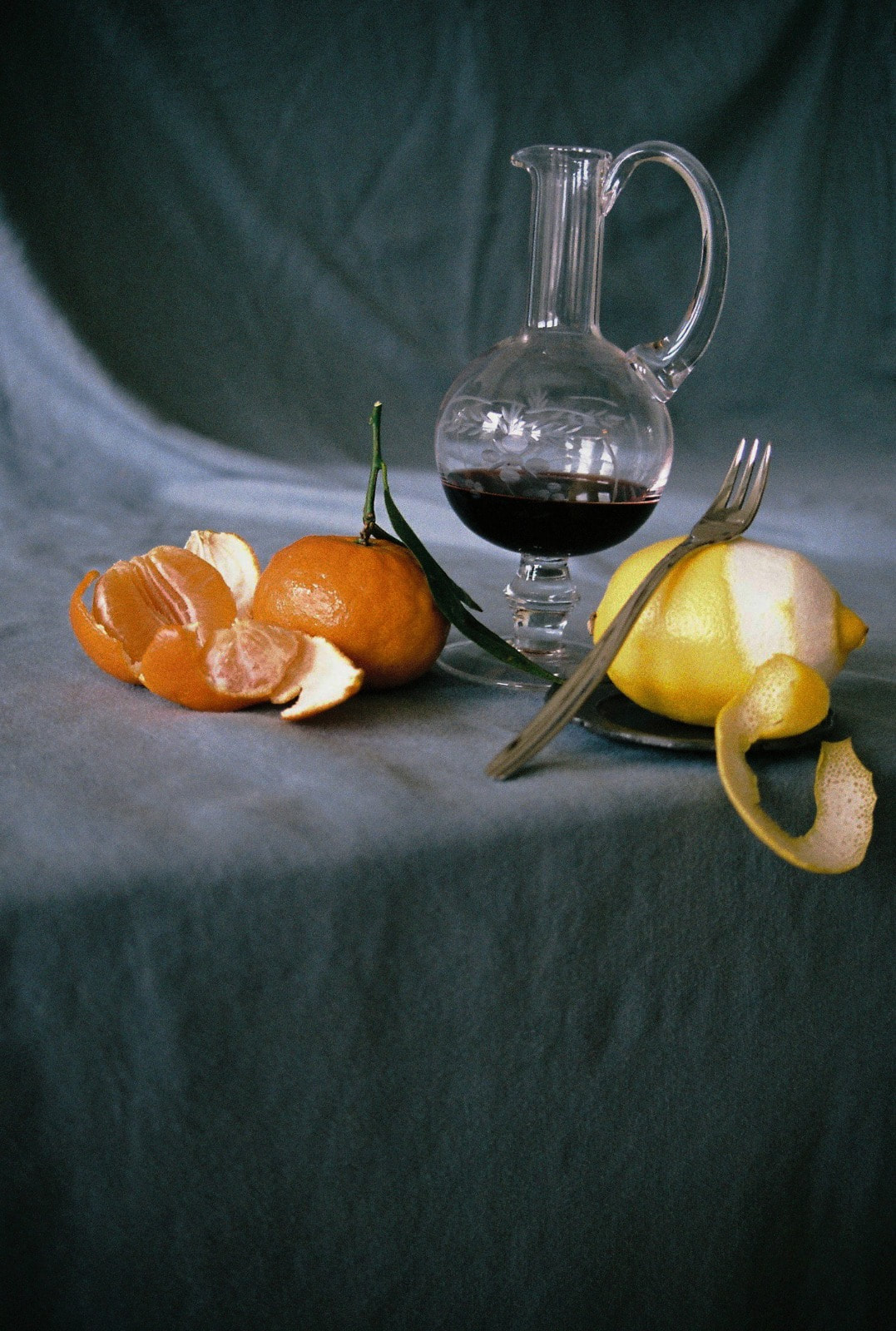
Lobster, shellfish or meat: wealth, gluttony and temptation
Poppies or dead animals: death. Poppy is also the flower that produces opium, the character of mortal sin of laziness.
Rose: the flower of Venus, symbol of love and sex
Crown: like masks, symbolize the absence of those who wore them.
Pomegranates: fertility (a metaphor for Persephone & Hades)
Globe: the earth and the Sky
Glass: a life of luxury.
Lemons: the bittersweetness of life
Tulips: nobility
Violets: modesty
Sunflower: devotion
Peaches: good health.
Bees: industriousness or how helpless we are against the course of destiny
Bread: the body of Christ, everyday life, humility
Violin: the futility of earthly existence (easily snapped strings symbolizes the broken threads of time)
Turtle: Long life. (The turtle has great longevity living up to 150 years).
Rotten fruit: a symbol of ageing
A butterfly: the resurrection of the Christ
A rose with thorns: the Virgin Mary’s suffering. A lily can also represent the Virgin Mary.
An ant: hard working
Dragonfly: (subspecies of butterfly) devilish.
Poppies or dead animals: death. Poppy is also the flower that produces opium, the character of mortal sin of laziness.
Rose: the flower of Venus, symbol of love and sex
Crown: like masks, symbolize the absence of those who wore them.
Pomegranates: fertility (a metaphor for Persephone & Hades)
Globe: the earth and the Sky
Glass: a life of luxury.
Lemons: the bittersweetness of life
Tulips: nobility
Violets: modesty
Sunflower: devotion
Peaches: good health.
Bees: industriousness or how helpless we are against the course of destiny
Bread: the body of Christ, everyday life, humility
Violin: the futility of earthly existence (easily snapped strings symbolizes the broken threads of time)
Turtle: Long life. (The turtle has great longevity living up to 150 years).
Rotten fruit: a symbol of ageing
A butterfly: the resurrection of the Christ
A rose with thorns: the Virgin Mary’s suffering. A lily can also represent the Virgin Mary.
An ant: hard working
Dragonfly: (subspecies of butterfly) devilish.
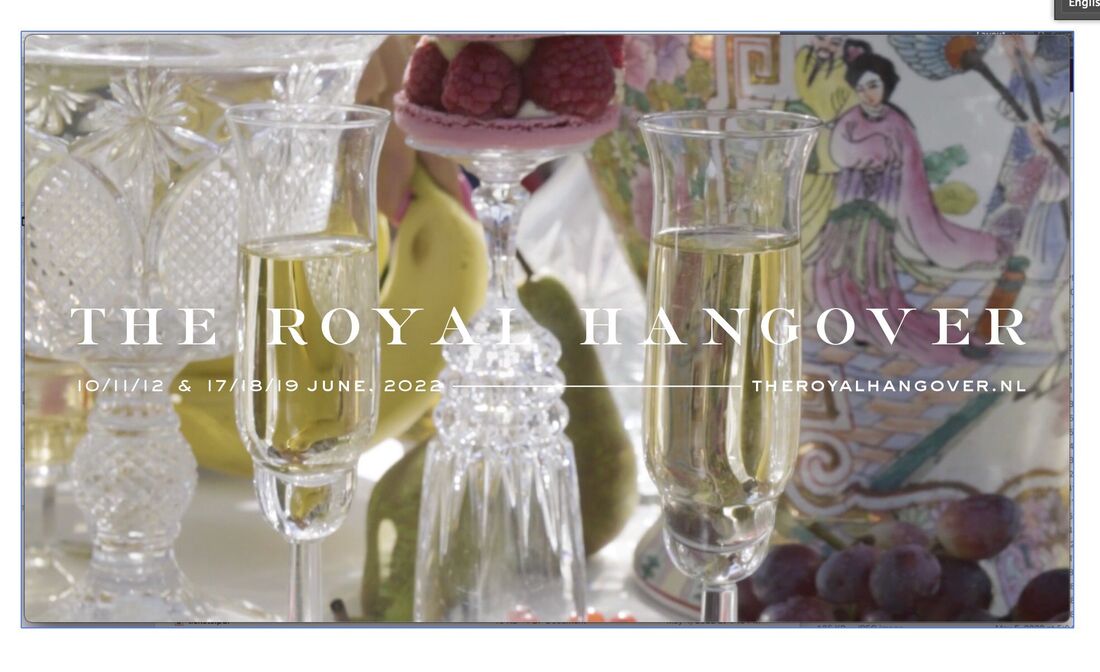
Vanitas paintings often depicted symbols of mortal wealth, accomplishment, and luxurious pleasure; playing cards, tobacco pipes, instruments, Chinese porcelain, hefty tomes. And they were often featured alongside skulls. Cuz none of it mattered. You couldn’t take it with you.
Still Life with Lemons, Oranges and a Pomegranate by Jacob van Hulsdonck, 1620
Still life with rummer, wine glass, crab and bread on a platter with a violin and flute on table by Pieter Claesz, 1644
A Still Life of a Roemer
Still Life with Oysters, Lemons and Grapes by Cornelis de Heem, 1660s
Still Life with Cheeses, Artichoke and Cherries by Clara Peeters, 1625
Laurens Craen, Still life with imaginary view, 1645
Osias Beert turned subjects into symbols: the cherries and strawberries represent the souls of men while a dragonfly represents the devil, waiting to corrupt them
